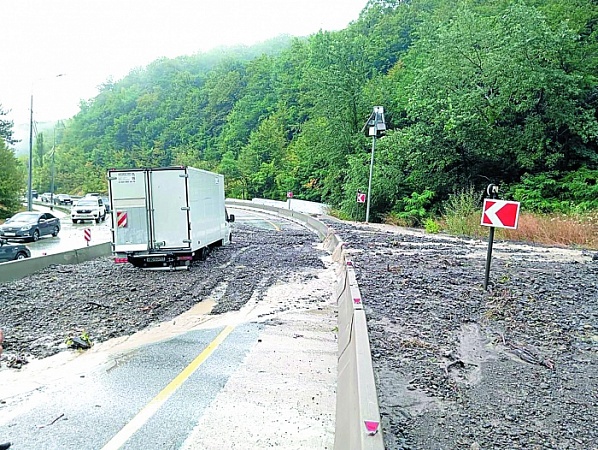Several bridges were destroyed by rivers that overflowed after heavy rains.
Over the weekend, the southern territories of Krasnodar Krai were hit by severe weather.
The heaviest rainfall occurred in the Tuapse municipal district and Goryachy Klyuch. Up to 160 millimeters of precipitation fell there in just a few hours—nearly two months’ worth. Rivers overflowed, flooding several settlements.
The situation in the Tuapse district became so severe that a local state of emergency was declared.
Torrential rains caused the Defanovka and Shapsukho rivers to rise. In Moldovanovka, two road bridges and one pedestrian bridge over the Shapsukho were destroyed. Nine houses and 25 adjacent properties were flooded. In the village of Lermontovo, a bridge was also destroyed, leaving 300 people without a crossing. This bridge connected the Lazurnaya Polyana neighborhood with the village itself. Additionally, a water pipeline was damaged, and five wells were flooded. A mudslide halted traffic through the Moldavanovsky Pass. On the M-4 “Don” highway near Dzhubga, reversible traffic was implemented. Traffic restrictions were also imposed on trucks traveling from Novorossiysk toward Gelendzhik. In the village of Defanovka, 24 houses were flooded, and a bus carrying 25 people fell from a bridge into the river. Seven rescuers and two pieces of equipment were involved in the rescue operation; all survived. In Novomikhaylovsky, water entered 20 properties, including a palliative care facility. In total, 70 properties were affected by flooding, with water entering 34 homes.
Authorities deployed 144 personnel and 41 pieces of equipment to assist the affected areas. Thirty-five inspection teams are assessing the damage. Pumping equipment has been distributed to apartment buildings and private homes, with floodwater removal expected to conclude shortly. In Novomikhaylovsky, several transformer substations were flooded. Water supply in Lermontovo will be restored within days.
Rivers Overflow
In the village of Fanagoriyskoye, Goryachy Klyuch, the Chepsi River rose rapidly. Emergency services attribute the sudden surge to a waterspout from the sea. A rescue operation was conducted near Tsarina Polyana to evacuate several groups of stranded tourists. They were cut off from the main road after a bridge collapsed. Drivers and passengers from 15 vehicles were unable to cross the river.
Rescuers successfully evacuated 22 people, including six children, to safety. Another 42 individuals were evacuated via a ford near Podnavisla. A tourist with a broken leg was hospitalized in Goryachy Klyuch. A separate rescue team evacuated 13 more tourists from the same area.
Preliminary estimates indicate that 35 properties in Fanagoriyskoye were flooded, with water entering some homes. No evacuations were necessary, but mud contaminated wells, leaving residents without drinking water. Cleanup began on Monday, with 23 well owners requesting assistance. Two stationary water tanks were installed in the town as a temporary solution.
Unrepaired Bridges
Residents of the Tuapse district captured the collapse of a bridge in Lermontovo on video. The footage shows how easily debris can destroy a steel structure. The bridge had been in poor condition, but locals continued using it due to a lack of alternatives. On one side of the river are a sanatorium and residential buildings.
The recent rains were relatively mild compared to past events in the region. However, they still exposed systemic issues that worsen the impact of severe weather.
Several bridges collapsed, though locals recall a far stronger flood two years ago when the Lermontovo bridge withstood the pressure. Large accumulations of branches and debris—known as “karch”—were noted as a contributing factor. The cause of such extensive debris buildup remains unclear, despite regular riverbed maintenance. Illegal logging upstream or restrictions on collecting fallen wood may play a role. Previously, residents used such wood for heating, which may have reduced flood risks. Another issue is that authorities can only clear riverbeds within municipal boundaries, while the Shapsukho River spans 41 kilometers. Delays in public alerts were also reported, possibly due to recent administrative consolidation, which has centralized decision-making in Tuapse.






